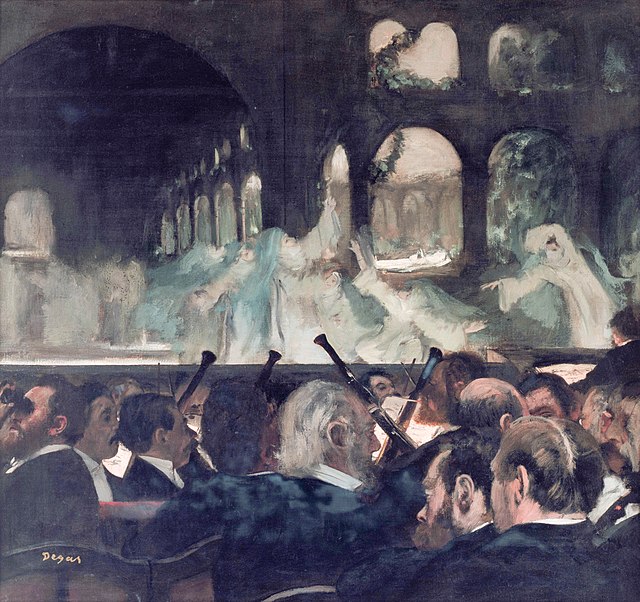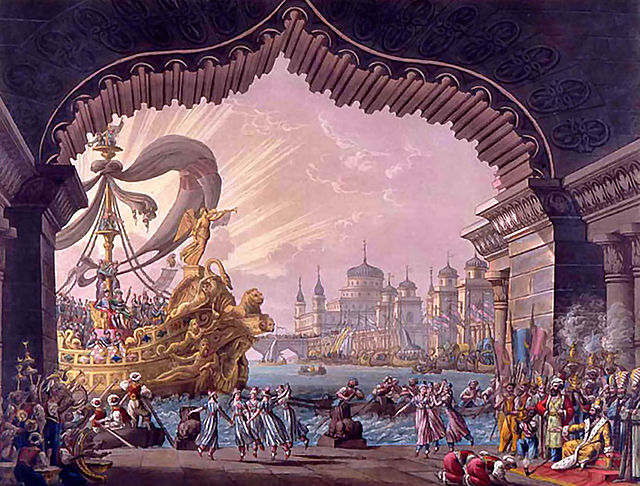Les Troyens is a French grand opera in five acts, running for about five hours, by Hector Berlioz. The libretto was written by Berlioz himself from Virgil's epic poem the Aeneid; the score was composed between 1856 and 1858. Les Troyens is Berlioz's most ambitious work, the summation of his entire artistic career, but he did not live to see it performed in its entirety. Under the title Les Troyens à Carthage, the last three acts were premièred with many cuts by Léon Carvalho's company, the Théâtre Lyrique, at their theatre on the Place du Châtelet in Paris on 4 November 1863, with 21 repeat performances. The reduced versions run for about three hours. After decades of neglect, today the opera is considered by some music critics as one of the finest ever written.
Cover of the Choudens edition of the vocal score
Cover of the 1863 Choudens vocal score for Les Troyens à Carthage, the second half of the opera, and first part performed.
The Choudens vocal score illustration for La Prise de Troie, the first part of the opera.
Poster for 1920 performances of Berlioz's Les Troyens in Rouen, France
Grand opera is a genre of 19th-century opera generally in four or five acts, characterized by large-scale casts and orchestras. The original productions consisted of spectacular design and stage effects with plots normally based on or around dramatic historic events. The term is particularly applied to certain productions of the Paris Opéra from the late 1820s to around 1860; 'grand opéra' has sometimes been used to denote the Paris Opéra itself.
Degas (1871): Ballet of the Nuns from Meyerbeer's Robert le diable (1831); one of the earliest sensations of grand opera
Set design by Francesco Bagnara for act 1 of Il crociato in Egitto by Meyerbeer
Meyerbeer Le Prophète set design for the final conflagration by Philippe Chaperon
Le Cid, Massanet, ballet at Le Cid's camp. Set by Rubé, Chaperon and Jambon.








